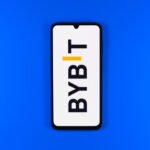We recently had the privilege of speaking with Alex Malkov, co-founder of HAQQ Network, a pioneer in the integration of tokenized real-world assets (RWAs) within the blockchain ecosystem. In this insightful discussion, Malkov explores the factors driving the growing interest in RWAs, the sustainability of this growth, and the transformative impact these assets are poised to have on both the crypto and traditional financial markets.
What factors have contributed to the recent surge in interest and overall volume of the tokenized RWAs market, and how sustainable is this growth in the long term?
I wouldn’t say that the increased attention to tokenized RWA as an asset class is something novel – rather, this is a result of gradual market development over the last 8 years or so. Considering the number of emerging Web3 projects and the obvious cost-efficiency benefits for traditional finance, both founders and large companies have long been exploring RWA-based solutions but to limited success.
There is an implicit network effect in RWA by design: all the benefits in terms of liquidity, transaction execution time, and associated costs are rendered useless if there are simply not enough buyers and sellers in the network. Another major roadblock, especially for institutional investors, was the lack of regulatory clarity. This problem became most pronounced in relation to potential bankruptcy procedures. Yes, buying fractionalized debt on-chain is convenient and cheap. However, were the issuer to go bankrupt, would their on-chain creditors have claims to the underlying assets of similar seniority with the off-chain lenders?
Crypto as a market has significantly matured. Higher than expected interest in spot Bitcoin ETFs showcased that blockchain has finally received a token of legitimacy from institutional investors. Finally, the MiCA regulation in the EU, Congress, and the SEC advancements in the US, as well as the whitepaper work by the International Swaps and Derivatives Association, have also significantly improved the regulatory clarity in the industry. This is why we see such a rapid increase in interest in the RWA solutions: institutions don’t like ambiguity, and now they have accumulated enough trust in crypto. I expect it to have a sustainable long-term influence driven by the positive feedback loop. As more players trade tokenized RWA, liquidity and market depth increase, making the niche even more attractive for new players to enter.
Which types of real-world assets do you believe hold the greatest potential for tokenization?
Bonds and commodity backed stablecoins, as well as fine art, are among the examples tokenization supporters frequently refer to, but there are even larger niches still untapped by retail investors. For instance, the minimum check size to become a limited partner for a venture capital or a private equity fund may be prohibitive, and the secondary market liquidity is quite limited. Tokenization of fund shares, however, as well as fractionalization and pooling, can circumvent both of these problems, thus lowering the barriers to entry and significantly improving liquidity.
We have already seen KKR doing that in 2022, and I expect more firms to follow suit soon. I also firmly believe that tokenization will transform commodity trading, making it much more globalized and efficient.
In what ways can tokenized RWAs enhance traditional assets?
As I’ve mentioned before, tokenized RWAs have the potential to greatly improve liquidity, reduce transaction execution time, and lower trading costs. For instance, JP Morgan’s permissioned blockchain Onyx offers real-time transaction settlement, active intraday liquidity management, and atomic transfers of cash and collateral ownership for interbank repos — the bloodline of the US financial system. Furthermore, fractionalization and pooling can significantly decrease the barriers to entry and even create secondary markets where there have been none.
As tokenized RWAs gain traction, what impact might this have on investor behavior and market dynamics?
Whether in times of market turbulence or simply in search of diversification, holding cash or stablecoins was considered the crypto’s alternative to the traditional market’s “flight to safety.” As tokenized RWAs gain traction, tokenized gold or tokenized low-yield bonds like AAA corporates or US Treasuries put significant pressure on the yieldless stablecoin market that doesn’t even have any inflation hedging. Of all crypto-native markets, I believe stablecoins will undergo the largest market dynamics shift.
What role would DeFi platforms play for tokenized RWAs, and how can they complement or compete with traditional financial institutions?
DeFi platforms can continue doing what they are best suited for – providing an opportunity to issue and invest in low-fee collateralized debt. While conventional for traditional markets, getting access to debt securities and off-chain commodities may change the way crypto lending works. Imagine pledging your tokenized US Treasuries in exchange for stablecoins to invest in on-chain Egyptian grain – this is the seamless future I envisage for DeFi platforms.
What unique features and technologies within the Haqq Network ecosystem are being utilized to facilitate the tokenization of real-world assets, and how do these innovations enhance the process? Can you provide examples of tokenization projects within the Haqq Network?
HAQQ is actively exploring the tokenization of debt and commodities within the framework of Islamic Finance. We plan to cater to both retail investors and B2B transactions by overseeing the launch of a gold-backed stablecoin on the HAQQ network. Common users can exchange the stablecoin for underlying physical assets, while the same stablecoin will facilitate the Islamic Interbank Market transactions. Besides gold, we consider other asset-backed tokens, like the tokenization of underlying real-world assets for the core tenets of Islamic finance — Mudarabah and Musharakah contracts.
Finally, we are also working on issuing the tokenized Sukuk. While Islamic Law generally treats debt issuance as Haram, Sukuk is the bond-like financial instrument that circumvents this prohibition, granting Islamic corporations and municipalities an opportunity to raise and trade debt.
The global sukuk volume has surged in the past years – and it is projected to grow from $904.5bn in 2023 to $1084.8bn in 2024. This increase can be attributed to the overall growth of Islamic finance, diversification of funding sources, infrastructure development and positive government initiatives. However, it is still difficult for an average user to access this financial instrument. Tokenization of Sukuk will lower the high barriers to entry, globalize the currently fractionalized Sukuk markets, and inject more liquidity into the sector.
Over the next 5 years, how do you see the tokenized RWA sector impacting the crypto industry and the financial market as a whole?
I think that the tokenized RWA sector, together with CBDC development and spot crypto ETFs, will continue the trend of crypto legitimization. It is unclear whether the next 5 years will be enough for crypto to become mainstream, but I definitely expect a much more widespread adoption.
Speaking of the impact on crypto natives, I’d expect the average risk-adjusted returns to improve due to expanded diversification opportunities. The traditional financial market, in the meantime, will enjoy more liquidity, transparency, and efficiency.
Read more interviews here.









